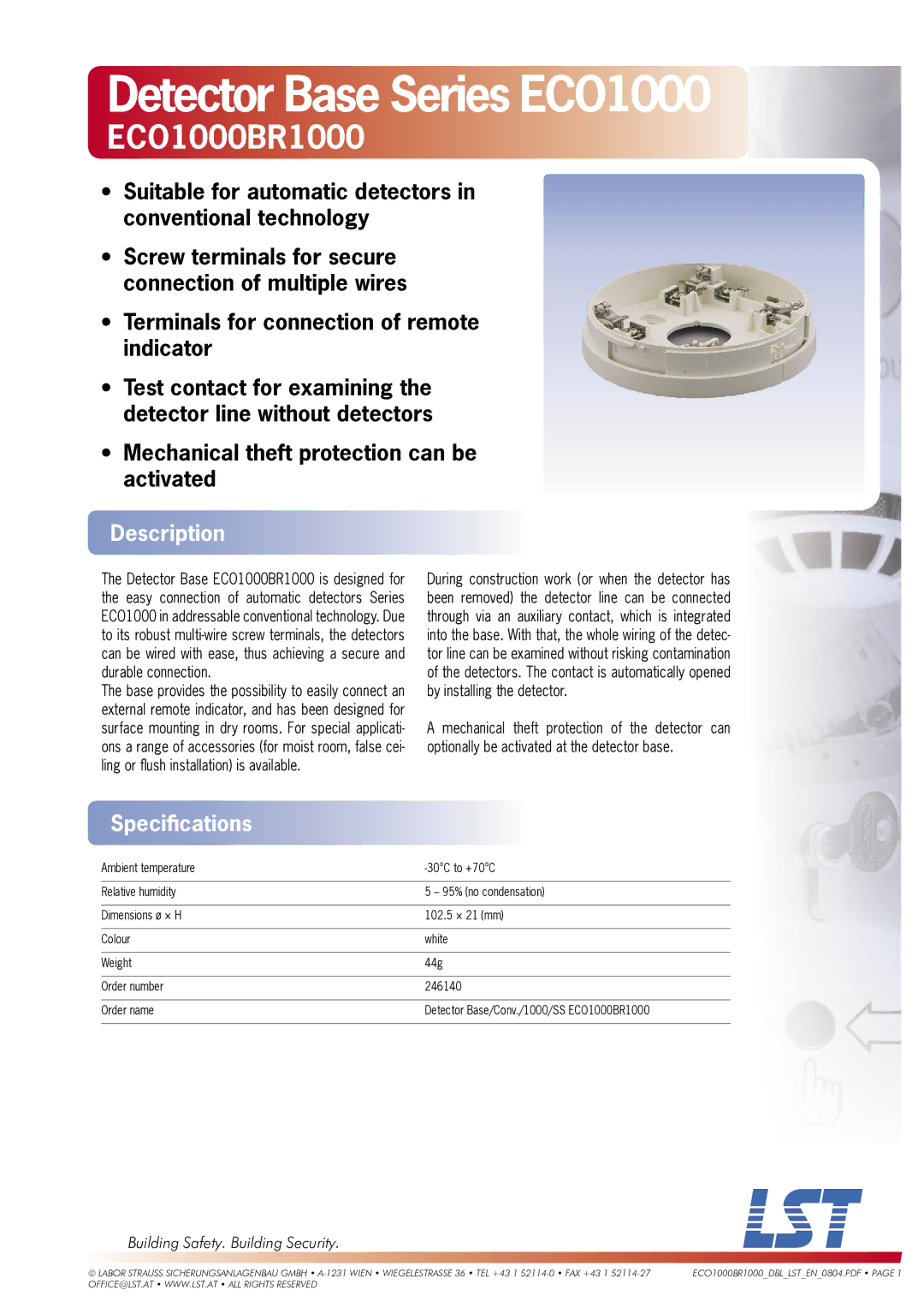ECO1000, ECO1000BR1000 specifications
The LST ECO1000 and ECO1000BR1000 are two standout models in the realm of eco-friendly technology, designed to meet the demands of modern consumers while emphasizing sustainability and efficiency. These two systems focus on providing advanced solutions tailored for environmental conservation, energy savings, and cost-effectiveness.The ECO1000 series is primarily known for its energy-efficient performance. It boasts a unique core technology that enables optimal energy utilization without compromising on output. This model utilizes a high-efficiency motor that operates with minimal energy consumption, making it an excellent choice for those looking to reduce their carbon footprint. Furthermore, the ECO1000 incorporates an intelligent control system that adjusts its operation based on real-time usage data, optimizing performance and reducing unnecessary power use.
On the other hand, the ECO1000BR1000 model builds upon the features of the ECO1000 but with added benefits specifically aimed at enhanced durability and versatility. One of its key characteristics is the robust build quality, which allows it to withstand harsh environmental conditions. This model is designed not just for domestic applications but also for industrial uses where reliability is paramount.
Both models utilize advanced materials that promote longevity while being recyclable, ensuring that they align with the principles of an eco-conscious lifestyle. They are equipped with smart connectivity features, enabling users to monitor and control the systems remotely via mobile applications, making energy management easier than ever.
In terms of maintenance, both models are designed with user convenience in mind. They feature self-diagnostic capabilities that alert users to maintenance needs before issues escalate, thus minimizing downtimes and repair costs.
Overall, the LST ECO1000 and ECO1000BR1000 present a compelling choice for those committed to sustainability without sacrificing efficiency or performance. Their pioneering technologies, energy-saving features, and durable construction make them suitable for a wide range of applications, from home use to larger industrial projects. Investing in these models not only contributes to significant cost savings on utilities but also promotes a greener, more sustainable future.

